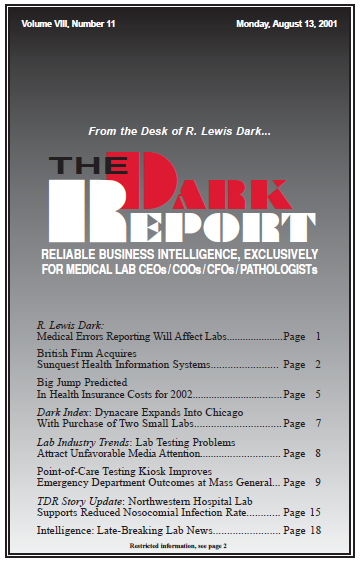DURING THE PAST TWO WEEKS, problems with laboratory tests received national media coverage, both on television and in print. The national publicity demonstrates the downside to growing consumer interest in laboratory testing. Journalists are willing to capitalize on public fears about the potential for medical errors. Early Warning To Labs Laboratory executives and pathologists should …
Lab Testing Problems Attract Unfavorable Media Attention Read More »
To access this post, you must purchase The Dark Report.


